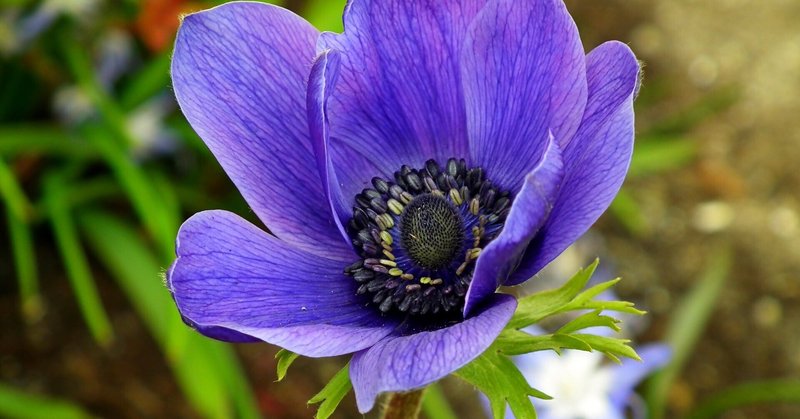
軽い詩 青春の小麦粉 light verse flour of youth
Cherish, cherish, as you please.
What they say "the flour of the youth";
For when it is into fermented bread made,
and consumed, it shall be No More.
Not Nevermore, but simply No More.
Though if that saddens you somehow,
then know that things that could withering know,
things like flowers, have more worth than the flour
have more wrath than "the flour of gold"
than the "la flour, les farines d'or".
大切に、大切に、好きなようにすれば良い。
彼らが言うところの「青春の小麦粉」
『the flour of the youth』;
それが発酵したパンになり、
消費されるとき、それはもうない、
「Nevermoreネバーモア」ではなく、単に「No Moreノーモア」なのだ。
然しもし、その様なことがあなたを悲しませるなら
枯れる事の知るものを存じよう、
花のようなものは、小麦粉よりも価値があり
「the flour of gold 金の粉 」よりも怒りがある。
「la flour, les farines d'or 」ーーー
『その一輪の華の粉と、黄金の翳す小麦粉たち』よりも。
(写真 イチリンソウ属 「anemone 風の花」
photo "genus anemone" or "windflower"
anemone 英語 wikipedia より
from anemone wikipedia
アネモネ
語源
オックスフォード英語辞典によると、ギリシャ語の ἀνεμώνη (anemōnē) は「風の娘」を意味し、ἄνεμος (ánemos, 「風」) + 女性の守護接尾辞 -ώνη (-ṓ, 「娘」の意) から来ている。 [11]オウィッドの『メタモルフォーゼ』には、この植物は女神アフロディーテが死んだ恋人アドニスの血に蜜をかけたときに作られたと書かれており、オウィッドはこの語源を、風に飛ばされやすい花びらの弱さを指していると説明している。「アネモネ "はまた、フェニキア語でアドニスの名前であるネアマン(Nea'man)を指すこともあり、植生の神であるイノシシの牙を持つ以前のシリア神話に言及している[12]。
文化におけるアネモネ
「アネモネ」は、その花が使われる文化や文脈によって、いくつかの異なる意味を持つ。
西洋におけるアネモネの花の意味のいくつかは、アドニスとアフロディーテが登場するアネモネの花の起源となったギリシャ神話に関連している。女神アフロディーテは、死を免れない男アドニスを恋人としていたが、アドニスがイノシシに刺され、その死にアフロディーテが流した涙がアドニスの血と混ざり合い、アネモネが生まれた[18]。
他のバージョンでは、イノシシはアドニスを殺すために他の嫉妬深いギリシャの神々によって送られた[19]。これらの起源物語は、春風の到来と愛する人の死という古典的な二重の意味を反映している。
ヴィクトリア朝の花言葉では、アネモネ[which?]はあらゆる種類の見捨てられた愛を表し、ヨーロッパの農民は害虫や病気、不運を追い払うためにアネモネ[which?]を携帯していた。
他の文化圏では意味が異なる。中国やエジプトの文化では、アネモネ[which?]の花はその色合いから病気の象徴とされていた。東洋文化では、アネモネ[which?]は不吉の象徴とされることもある。日本のアネモネは不吉な知らせを連想させるかもしれない[14]。
この花はアンリ・マティスが1937年に描いた「Robe violette et Anémones」に描かれている[20]。
Anemone
Etymology
According to the Oxford English Dictionary, Greek ἀνεμώνη (anemōnē) means 'daughter of the wind', from ἄνεμος (ánemos, 'wind') + feminine patronymic suffix -ώνη (-ṓnē, so 'daughter of').[11] The Metamorphoses of Ovid tells that the plant was created by the goddess Aphrodite when she sprinkled nectar on the blood of her dead lover Adonis, and Ovid describes the etymology as referring to the frailty of the petals that can be easily blown away by the wind. "Anemone" may also refer to Nea'man, the Phoenician name for Adonis, referring to an earlier Syrian myth of the god of vegetation, also tusked by a boar.[12] The common name windflower is used for the entire genus.[13][14]
Anemones in culture
"Anemone" has several different meanings depending on the culture and context in which the flower is being used.
Several of the Western meanings of anemone flowers pertain to the Greek mythology of the origin of the anemone flower featuring Adonis and Aphrodite. The goddess Aphrodite kept the mortal man Adonis as a lover; when Adonis was gored by a wild boar, Aphrodite's tears at his death mixed with his blood and gave rise to the anemone.[18] In other versions, the boar was sent by other jealous Greek gods to murder Adonis.[19] These origin stories reflect the classical dual meanings of the arrival of spring breezes and the death of a loved one.
In the Victorian language of flowers, the anemone[which?] represented a forsaken love of any kind, while European peasants carried them[which?] to ward off pests and disease as well as bad luck.
In other cultures, the meanings differ. In Chinese and Egyptian cultures, the flower of anemone[which?] was considered a symbol of illness due to its coloring. The anemone[which?] can be a symbol of bad luck in Eastern cultures. The Japanese anemone may be associated with ill tidings.[14]
The flowers are featured in Robe violette et Anémones, a 1937 painting by Henri Matisse[20]
この記事が気に入ったらサポートをしてみませんか?
